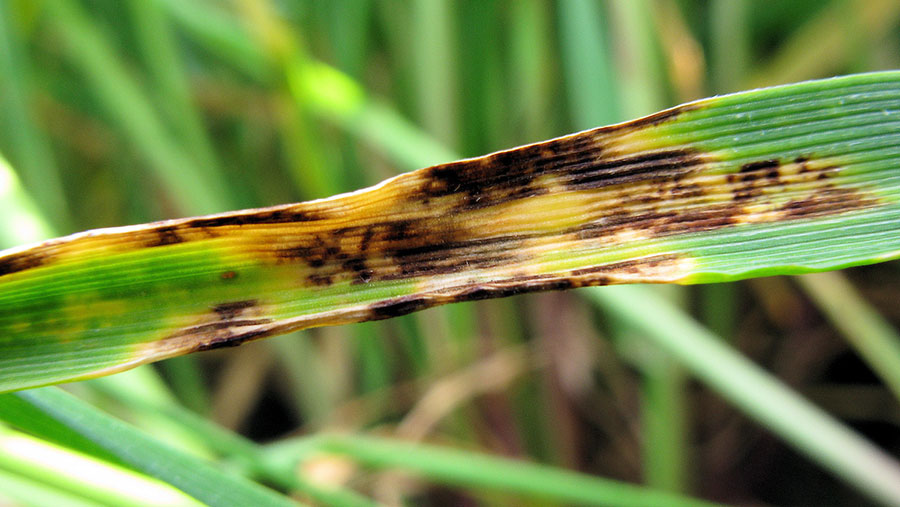SDHI fungicide resistance discovered in key barley disease
 © Blackthorn Arable
© Blackthorn Arable Researchers have discovered isolates of a key disease in barley that are more resistant to SDHI fungicides, raising concerns on future efficacy.
Mutated UK net blotch isolates that are less sensitive to succinate dehydrogenase inhibitor (SDHI) fungicides were identified in a field where AHDB fungicide performance trials were being carried out in 2016.
See also: Caution urged over using two SDHI sprays in wheat
Net blotch is a costly fungal disease in barley which can lead to large yield losses of up to 40% where the disease is not well controlled.
Stuart Knight of Niab explained that straight SDHI performance was “disappointing” in one 2016 trial that tested a range of products against net blotch in a protectant situation.
Straight SDHI
As good performance was observed from the straight azole (prothioconazole) and mixtures in the same Norfolk-based trial, he believes it pointed to a possible SDHI efficacy effect, rather than a seasonal effect.
Paul Gosling, who manages fungicide performance and resistance work at AHDB added that compared with the previous three years (2013 to 2015), the drop in straight SDHI performance in 2016 was quite pronounced.
“The two solo SDHIs trialled failed to achieve more than 30-40% control of net blotch, even at the full label rate.”
The UK is not alone, as researcher Bart Fraaije, who conducted the screening studies at Rothamsted Research highlighted these mutations have also been found in Europe.
“However, this is the first time that they have been found at high frequencies in a UK population and it helps explain the poor performance observed in the 2016 trial.
“We will continue to monitor the situation to help establish the spread and frequency of SDHI mutations in UK net blotch populations,” he said.
Reducing risk
Fiona Burnett, SRUC disease expert and chairman of the Fungicide Resistance Action Group (FRAG) believes the discovery further underlines the need for farmers to follow best practice in slowing the development of these mutations.
“The guiding principle is to make life as hard as possible for pathogens by avoiding overexposure to any one fungicide group,” she said.
Dr Burnett added SDHIs should always be used in balanced mixtures, never applied with weak partners or outside of statutory limitations.
The addition of multisites to programmes also adds protection.
“It is more important than ever to follow FRAG guidance, as it is the most effective way to slow the emergence of these mutations and maintain the disease control that growers need.”


